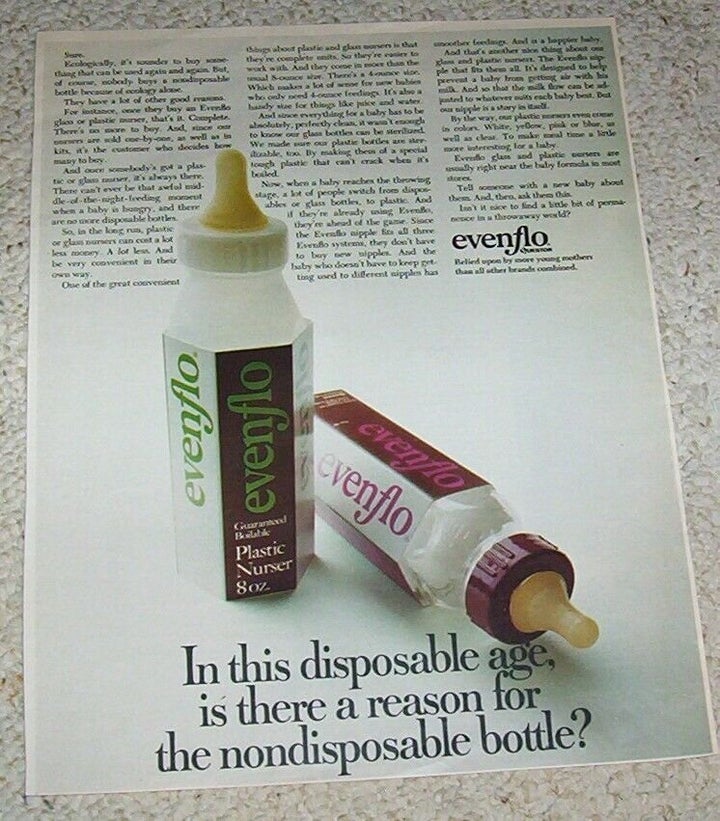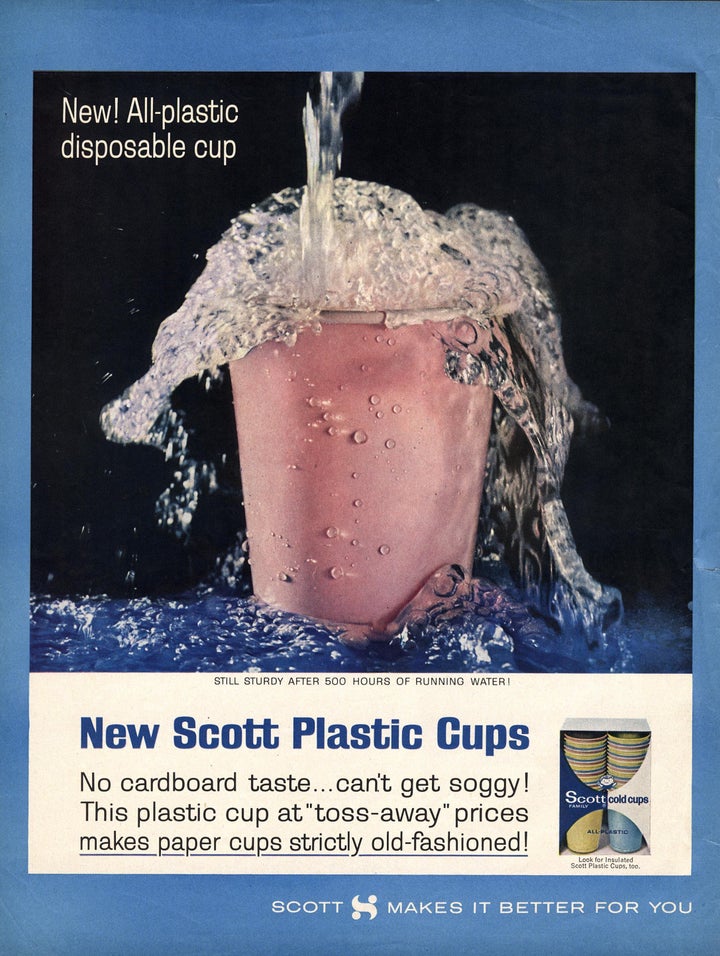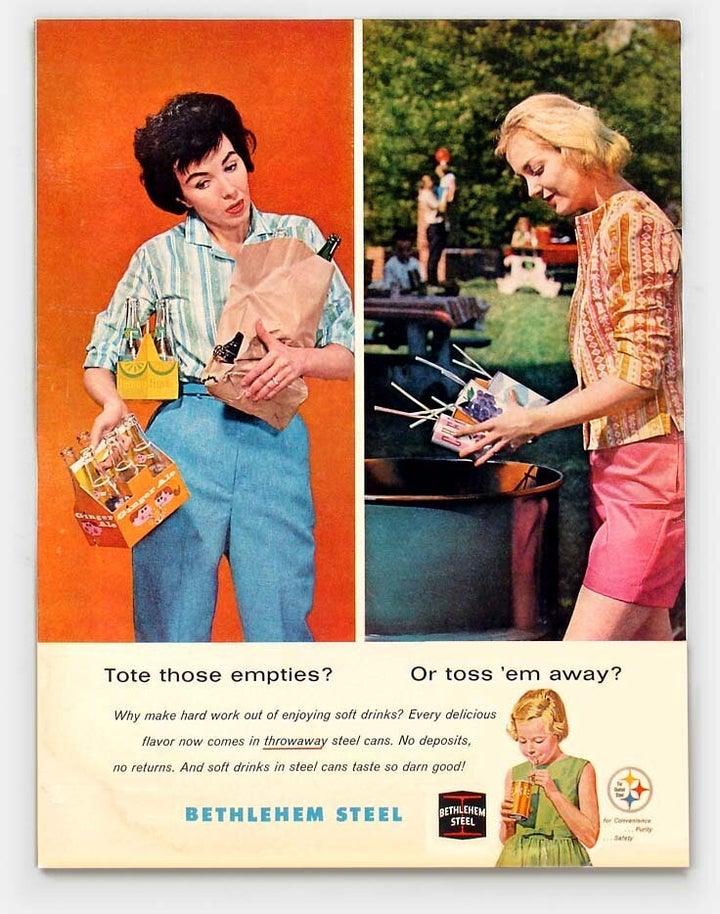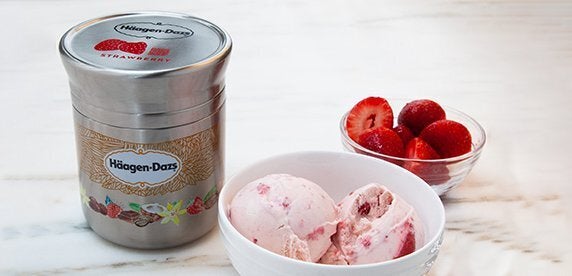How did we become so addicted to single-use plastics?
Take disposable soft-drink bottles, for example. Today, people around the world buy almost a million plastic beverage bottles every minute. Even as activists begin calling for change and businesses and lawmakers explore solutions, the demand for new plastics is likely to increase. Production of virgin plastic, pegged at 311 million tons in 2014, is expected to more than double by 2030.
Plastic is a durable material. It can take decades, even centuries, to break down. But society has designated many plastic objects to be disposable ― basically, we throw out plastics way too soon, creating an artificial bottomless pit for new plastic to fill.
“We were trained to buy this stuff, these identical, multiple objects that are meant to be used for a short period of time and then replaced with an identical one ― and that took cultural training,” Odile Madden, a plastic conservation scientist at the Getty Conservation Institute, told HuffPost.

Many objects that are designed to be disposable didn’t use to be. A century ago, beverages were delivered in glass bottles, which people would return to manufacturers to be refilled, says Robert Friedel, a historian at the University of Maryland. These so-called “two-way” bottles were reused some 30 to 50 times.
The return-and-refill system’s decline in the United States began after World War II, when manufacturers of steel and, later, aluminum cans wanted to enter the beverage market, Friedel said.
“The cans are actually what began the single-use system, because cans have never been reusable,” he explained. A can couldn’t be returned and refilled like a glass bottle because once a can was cracked or cut open, there was no way to replace the top, whereas bottles simply need a new cap.
“We were trained to buy this stuff.”
- Odile Madden, plastic conservation scientist at the Getty Conservation Institute
“The marketers had to come up with a very strong campaign to convince people that life would be easier for them if they did not have to return the bottles,” said Friedel.
Meanwhile, mass-production capacity for plastic items built for the war effort got redirected to civilians, according to Madden. Disposable versions of everyday household objects, from cups to cutlery, became commonplace. That was when the term “consumer” emerged, she said.
“In the ’50s, ’60s and 1970s, we begin to see a shift from high-quality plastics to this segment of production that’s about identical, multiple objects that are designed to be thrown away,” said Madden. “This has very much trained us that plastic objects are disposable and hence cheap, something not to be valued,” she added.

Advertising from this era promoted throwing things away, something that people were not yet familiar with. These ads emphasized cost and convenience, touting plastics as being so cheap to buy that throwing them out was no big deal, or that trashing single-use cans was easier than going through the hassle of returning glass bottles.
“I call it the tyranny of convenience,” says Friedel. “The marketers began to persuade people that there is an inconvenience, but [one] that they had never noticed before.”

To hold on to their market, glass bottle manufacturers began making their bottles thinner and of lower quality so that they could also be thrown away, said Friedel. By the time manufacturers figured out how to make thin-walled plastic bottles specifically for beverages, toward the end of the 1970s, the two-way containers and reuse system had largely disappeared from the United States.
The general public had also learned that plastic objects were cheap, replaceable and therefore disposable. The single-use plastic beverage bottle fit right into the system like a fish taking to water.
“We’ve learned that if we use something, we can throw it away,” said Madden. “There is no away.”
Curbside collection for household recycling grew in popularity during the 1980s. Metal cans could be melted down and remade, and so could plastic containers, albeit to a far lesser extent. But Friedel describes recycling programs, widely hailed as an environmental success, as an “ironic failure” because they supplanted the better program of reuse.

“It’s always much more environmentally costly” to recycle than to reuse, Friedel said. Transporting reusable glass bottles back and forth certainly has a substantial carbon footprint, since glass bottles are heavy. But recycling consumes energy too, from collecting, sorting and melting aluminum or plastic down and making new containers. And if reusable containers were made from plastic, their transportation would have a lighter carbon footprint.
So how do we start to fix the problem? Change will require a radical shift in consumer habits, said Madden. For example, people could avoid eating or drinking on the go, when they’re on the road or at a sporting event.
But individuals can’t stem the flow of trash on their own. Businesses will have to provide options for consumers and create new norms, said Kate Melges, a plastics campaigner at Greenpeace.
Some companies hope that by designing beautiful packaging that’s also reusable ― items people want to put on display in their home ― they can create a renaissance for refill-and-reuse systems. The startup Loop, for example, is partnering up with big brands like Procter & Gamble to bring back the refill-and-reuse system in personal care and cleaning product sectors. (Friedel points out that in other countries, two-way containers still exist.)

Grocery stores and takeout food establishments could start deploying returnable containers, following the example of startups like GoBox. Inventing new ways to deliver products, such as concentrating a liquid solution or using water-activated tablets instead of liquids or gels, could reduce or even eliminate unnecessary plastic packaging.
There’s still a long way to go, Melges noted. “A lot of these things, they’re not available at a large scale right now. You have to look quite hard to find them.”
Going back to refill-and-reuse systems could make a dent in demand for virgin plastic. And of course, producing less virgin plastic is really key for breaking free from plastic waste, she said.
“If you were to come home and find that your sink or your bathtub is overflowing, you wouldn’t immediately run for a mop,” Melges said. “You would go and turn off the faucet. And that’s what we need to see with plastic production.”
“It’s hard to make changes,” she added, “but I think it can happen.”
This story is part of a series on plastic waste, funded by SC Johnson. All content is editorially independent, with no influence or input from the company.

